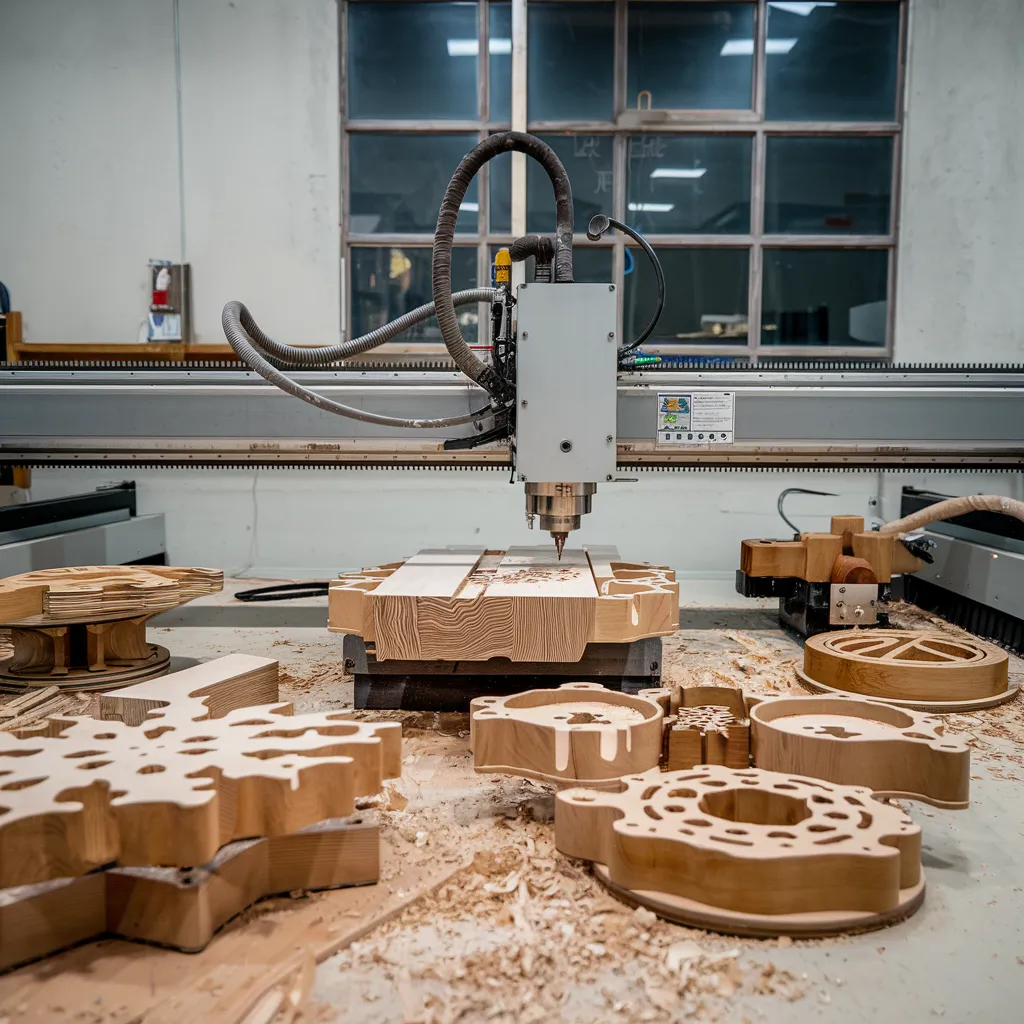CNC Play: Revolutionizing the Future of Design computer Numerical Control (CNC) machines are at the heart of modern manufacturing, providing exceptional precision and versatility. For beginners stepping into the world of CNC, understanding the basics and mastering the intricacies of CNC play is crucial to ensure accurate results. This guide will walk you through the fundamentals of CNC machining, tips for getting started, and strategies to enhance precision.
Understanding CNC Basics
CNC machines are automated tools that are controlled by programmed instructions. These machines can cut, drill, mill, and perform other operations with extraordinary precision. The core components of a CNC system include:
- Control Unit: The brain of the CNC machine that interprets and executes the program.
- Machine Tools: Components such as spindles, cutting tools, and axes that perform the actual machining.
- Workpiece: The raw material to be shaped or machined.
- Software: CAD (Computer-Aided Design) and CAM (Computer-Aided Manufacturing) software are used to design and generate the machining program.
Steps to Get Started with CNC
For beginners, the journey into CNC machining can be overwhelming. Here are the steps to build your foundation:
1. Learn the Terminology
Familiarize yourself with CNC-related terms such as G-code, M-code, feed rate, spindle speed, and toolpath. Understanding these terms will help you communicate effectively and interpret machine instructions.
2. Choose the Right CNC Machine
Select a machine that aligns with your goals. Beginners often start with entry-level machines like desktop CNC mills or routers, which are affordable and easier to use.
3. Master CAD and CAM Software
CAD software helps you create designs, while CAM software translates those designs into machine-readable code. Begin with beginner-friendly tools like Fusion 360 or Easel to develop your skills.
4. Practice Safety Protocols
Safety is paramount when working with CNC machines. Wear appropriate personal protective equipment (PPE), such as safety glasses and ear protection. Ensure that the work area is clean and free of obstructions.
5. Start with Simple Projects
Begin with straightforward tasks like engraving or cutting basic shapes. These projects help you become familiar with machine operations and build confidence.
Tips to Achieve Precision
Precision is the hallmark of CNC machining. Here are strategies to ensure your work meets the highest standards:
1. Calibrate Your Machine
Regular calibration of your CNC machine is essential to maintain accuracy. Check the alignment of the axes, spindle, and cutting tools to prevent errors.
2. Optimize Tool Selection
Choose the right cutting tool for the material and operation. Factors like tool geometry, material composition, and coating affect performance and precision.
3. Use Proper Feeds and Speeds
Feed rate and spindle speed significantly influence the quality of the cut. Refer to manufacturer guidelines for optimal settings based on the material and tool.
4. Minimize Tool Deflection
Tool deflection occurs when cutting forces cause the tool to bend or deviate. Use shorter tools and reduce cutting forces to minimize deflection.
5. Secure the Workpiece
Proper workholding is critical. Use clamps, vises, or vacuum fixtures to prevent movement during machining.
6. Simulate Before Machining
Use CAM software to simulate the toolpath and identify potential issues before running the machine. This step saves time and prevents costly mistakes.
Troubleshooting Common Issues
As a beginner, you may encounter challenges. Here are solutions to common problems:
- Inconsistent Cuts: Check for loose bolts, misaligned axes, or worn tools. Regular maintenance can address these issues.
- Tool Breakage: Ensure proper tool selection, feeds, and speeds. Avoid overloading the tool.
- Surface Finish Issues: Adjust feed rates and spindle speeds. Use appropriate cutting fluids for lubrication.
- Program Errors: Review the G-code for syntax errors and verify the toolpath.
Advancing Your Skills
Once you have mastered the basics, consider expanding your expertise with advanced techniques:
1. Explore 3D Machining
Move beyond 2D operations to create complex 3D shapes. This requires advanced CAD modeling and precise toolpath programming.
2. Experiment with Different Materials
Work with a variety of materials, such as metals, plastics, and composites. Each material has unique machining characteristics, offering opportunities to refine your skills.
3. Learn Manual G-Code Programming
While CAM software automates programming, understanding G-code allows you to make manual adjustments and troubleshoot effectively.
4. Incorporate Automation
Explore features like tool changers, probing systems, and automated workpiece loading to streamline production and enhance efficiency.
5. Join the CNC Community
Connect with other enthusiasts through online forums, workshops, and social media. Sharing experiences and learning from others accelerates your growth.
Final Thoughts
CNC play is revolutionizing the future of design, providing unmatched precision and endless possibilities. Mastering CNC requires patience, practice, and a commitment to learning. By starting with the fundamentals, embracing precision techniques, and continuously challenging yourself, you can unlock the full potential of CNC machining. Whether you’re a hobbyist or aspiring professional, the journey into CNC is as rewarding as the creations you’ll produce. Happy machining!
